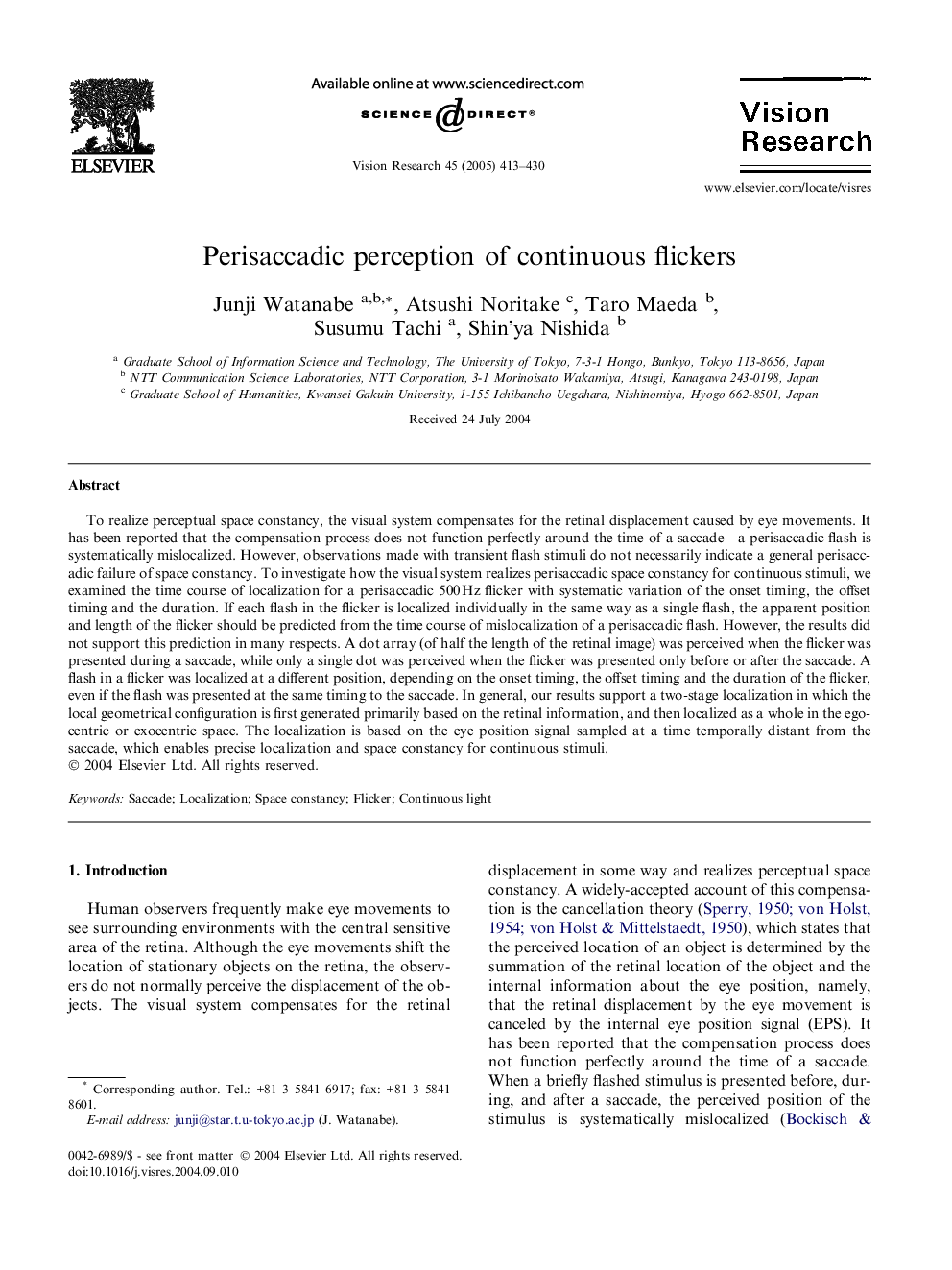| Article ID | Journal | Published Year | Pages | File Type |
|---|---|---|---|---|
| 9348705 | Vision Research | 2005 | 18 Pages |
Abstract
To realize perceptual space constancy, the visual system compensates for the retinal displacement caused by eye movements. It has been reported that the compensation process does not function perfectly around the time of a saccade--a perisaccadic flash is systematically mislocalized. However, observations made with transient flash stimuli do not necessarily indicate a general perisaccadic failure of space constancy. To investigate how the visual system realizes perisaccadic space constancy for continuous stimuli, we examined the time course of localization for a perisaccadic 500Â Hz flicker with systematic variation of the onset timing, the offset timing and the duration. If each flash in the flicker is localized individually in the same way as a single flash, the apparent position and length of the flicker should be predicted from the time course of mislocalization of a perisaccadic flash. However, the results did not support this prediction in many respects. A dot array (of half the length of the retinal image) was perceived when the flicker was presented during a saccade, while only a single dot was perceived when the flicker was presented only before or after the saccade. A flash in a flicker was localized at a different position, depending on the onset timing, the offset timing and the duration of the flicker, even if the flash was presented at the same timing to the saccade. In general, our results support a two-stage localization in which the local geometrical configuration is first generated primarily based on the retinal information, and then localized as a whole in the egocentric or exocentric space. The localization is based on the eye position signal sampled at a time temporally distant from the saccade, which enables precise localization and space constancy for continuous stimuli.
Related Topics
Life Sciences
Neuroscience
Sensory Systems
Authors
Junji Watanabe, Atsushi Noritake, Taro Maeda, Susumu Tachi, Shin'ya Nishida,
